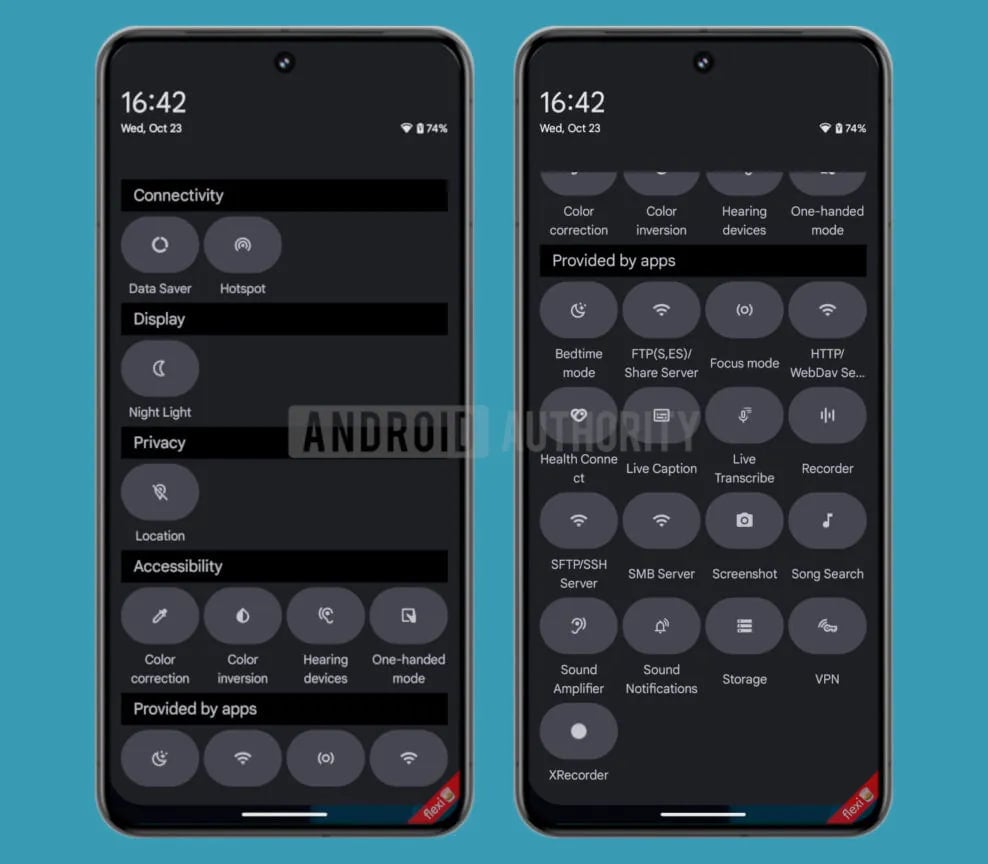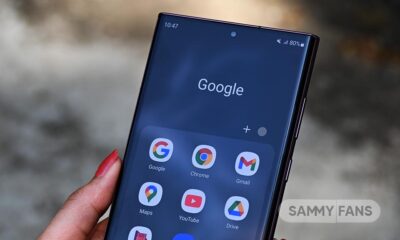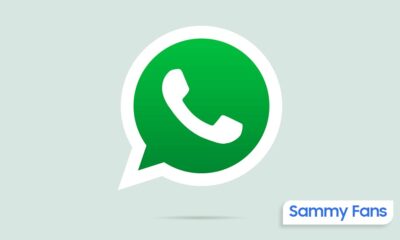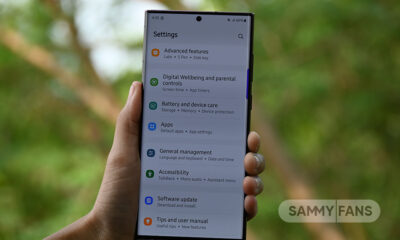Android
Google introduces longevity GRF for 7-Year Android update support, starting with Snapdragon 8 Elite

Google has introduced a program known as Longevity GRF (Google Requirements Freeze) aimed at extending the lifespan of Android device software support, just like the Samsung Galaxy S24 and Google Pixel 8.
With the Longevity GRF program, Google is allowing chipset manufacturers like Qualcomm, starting with the Snapdragon 8 Elite, to support its platforms for up to 7 years of Android updates. It means that devices equipped with the supported chipsets could potentially receive Android OS updates for up to 7 years from the initial release.
This program makes it easy for manufacturers to give longer software updates without always changing the vendor software for each new Android version. The decision is to make longer support for smartphones more common across the Android ecosystem, not just for Google’s devices.
It is not that simple, there are some challenges and limitations too. For instance, some new exclusive features might not be available unless the manufacturer software itself is updated. Also, Google’s commitment to Linux kernel support might limit practical functionality towards the end of those 7 years.
As per the information, the GRF program currently allows for the reuse of vendor software across 3 Android version updates. Under the existing GRF terms, if an OEM wants to go beyond the 3 updates to a fourth, fifth, or up to 7th update, they have to pay the chipset vendor for extended support to update the necessary software. Or, they have to update Chip’s software on their own to keep up with Google’s new requirements for each future update.
READ MORE:
If the Longevity GRF program becomes widely adopted, it could set a new standard for software support. The software support longevity could lead Android devices towards robust hardware, encouraging easier upgrades and maintenance.

For your information, the Google Pixel 8 and Pixel 9 series will receive seven years of software support, which includes Android OS upgrades, security updates, and regular Feature Drops. Similarly, Samsung Galaxy S24 series and Fold6/Flip6 also support up to 7 years of software support.
Android
Google releases Android 15 QPR1 Beta 3 update with bug fixes

Google has pushed the Android 15 QPR1 Beta 3 update for Pixel devices. This update. The update fixes several issues that users and developers encountered in the previous version. The release comes approximately six weeks after the previous version.
Android 15 QPR1 Beta 3 update includes the October 2024 security patch. It is available for several Pixel devices, including the Pixel 6, 6 Pro, 6a, 7, 7 Pro, 7a, Pixel Tablet, Pixel Fold, Pixel 8, 8 Pro, 8a, 9, 9 Pro, 9 Pro XL, and 9 Pro Fold, and Android Emulator.
Quarterly Platform Releases (QPRs) provide significant updates compared to monthly security patches as they bring notable user interface changes and new features that do not require waiting for the next major Android version.

This update addresses issues with notifications being cut off, volume buttons not working with some Bluetooth devices, and app icons showing the wrong image. It also resolves crashes when switching users or during system UI use, and addresses problems for foldable devices.
Additionally, Bluetooth features have been improved for better volume control for connected devices. Overall, it improves performance and stability for a better experience.
WHAT’S NEW [CHANGELOG]
Developer- and user-reported issues
- Fixed an issue that sometimes caused notifications to be displayed with some content that was cut off.
- Fixed an issue with system memory paging that sometimes caused devices to crash and restart.
- Fixed an issue where the volume buttons didn’t work when connected to certain Bluetooth devices.
- Fixed an issue where some app icons on the home screen were displaying the default system icon instead of the app’s icon.
- Fixed an issue that caused a device to run slowly and sometimes crash when switching back to the primary user from the secondary user.
- Fixed an issue that sometimes caused the system UI to crash.
- Fixed an issue for foldable devices where the screen sometimes went blank when unfolding the device.
Other resolved issues
- Fixed an issue that sometimes prevented users from interacting with heads-up notifications.
- Fixed an issue that sometimes caused the system to crash while taking a bug report.
- Fixed various other issues that were impacting system stability, connectivity, and interactivity.
Bluetooth resolved issues
- Fix a crash in BluetoothDevice.getType() that occurred primarily in the testing environment when Bluetooth resources were reused between virtual device instances.
- Improved LE Audio volume control by enabling independent adjustment of each connected sink’s volume using the UI and limiting volume key adjustments to the primary sink.
Android
Android 16 may introduce Quick Settings tile categories
Android 16 could feature Quick Settings tile categories on Pixel phones. The latest Android 15 QPR1 Beta 3 release suggests that Google is preparing to make it easier to find the right Quick Settings tile through categories.
Expected Android 16 Quick Settings tile categories include Accessibility, Connectivity, Display, Privacy, Provided by apps, Unknown, and Utilities. To enhance the experience further, Google may also revamp the Quick Settings editor.
As shown in the screenshot, tiles like Data Saver and Hotspot are grouped under the Connectivity category while tiles like Color correction, Color inversion, Hearing devices, and One-handed mode are put under Accessibility.
The Utilities category should include Device controls and a QR code scanner. Notably, tiles that are already added will not be shown under categories, that said, the category section will be vacated in case of no tiles remaining to be used.

Google tweaked the Quick Settings in Android 15’s latest QPR Beta. However, it could be a design revamp reserved for the next major release. We would see categorized Quick Settings on Pixel devices with Android 16 next year.
One UI 7
While Google preparing for Android 16, Samsung hasn’t yet kicked off Android 15’s Beta. The company confirmed Beta will arrive by the end of the year. Galaxy users have to wait till the S25 series launch to get the Stable release.
Samsung is making massive interface changes in the One UI 7. There will be amazing personalization tricks apart from new Galaxy AI features, improved performance and security, and smoother animation and transitions.
Android
After these Android 15 serious issues, I am glad Samsung delayed the One UI 7.0 beta program

At the beginning of this month, I wrote an article highlighting the advantages of the delayed One UI 7.0 beta program. It now looks like this delay has indeed proven to be beneficial.
By delaying the beta program, Samsung aims to ensure that One UI 7.0 is more stable and bug-free upon release. By doing things this way, the Galaxy users might not run into the problems that other smartphone users are experiencing because they updated to Android 15 too soon. What’s exactly happening?
It appears that the Android 15 update has introduced several issues for some Google Pixel 6 series owners. There have been reports (via Android Police) of Android 15 causing Pixel 6 devices to become completely unresponsive or “bricked.” This means the devices do not function at all after updating Android 15 OS, showing no signs of life even after trying common troubleshooting methods.
After going deep into these reports (via Reddit), these problems are appearing after enabling the Android 15’s Private Space feature. If you are a Pixel device owner, you should now avoid using this feature or even updating to Android 15 until a fix is provided.
As per the latest information, Google hasn’t yet confirmed anything officially about the problem, but it’s likely the company will fix these issues in upcoming updates. Notably, this isn’t the first time that Pixel devices are facing such issues.
These Android 15 issues are teaching Samsung an important lesson. Samsung might be taking its time to make sure they don’t fall into the same traps, keeping its updates from messing up how devices work.
As a beta tester myself, I prefer the delayed beta program over the buggy One UI 7.0 beta build, especially, when we are talking about the bricked device issue.

In the end, while delays can be disappointing for some Samsung Galaxy users, for most, it is time-saving and stress-free.
READ MORE:








